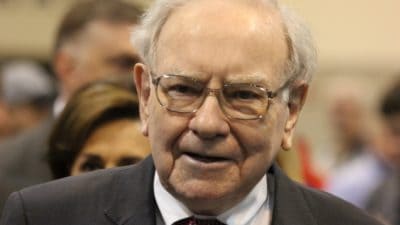Over the years I’ve noticed the average person barely holds him or herself to account when it comes to their investing endeavor.
They don’t count this. They double count that. Or they don’t count anything at all.
You might say what does it matter whether you keep a good record of your returns?
True, while I’d love to believe Warren Buffett, Neil Woodford, and Nick Train all read my articles and forward them to their fund manager mates, the fact is 99.999% of you look after only your own money.
Who cares exactly how well you’re doing as long as you’re doing well enough?
I think this logic is flawed.
For starters you could be poorer in retirement if you’re a rubbish stock picker. You may have been better off in funds. Lagging the market’s return by just a few points makes a big difference long-term, leaving you getting by on less in your old age.
Even if you are a decent manager of your own money, you’re still missing an opportunity to improve if you don’t know where you’re going wrong.
Here are five ways DIY stock pickers stay in the dark about their returns.
1. They don’t track their returns
A great many private investors – probably most – have no idea how well they are doing. They see some shares or funds go up and pat themselves on the back. They see others do badly and try not to think about it. Over time their portfolios rise because they’re adding new money and stock markets tend to rise over time, so they guess they’re doing okay.
If you don’t track your returns, though, you won’t realize if you’re beating even a simple global index fund. This can make a huge difference over time.
Let’s say you save £5,000 a year into your untracked retirement portfolio. After 25 years it turns out you achieved a nominal return of 5%.
Not bad – and well above cash. You’re left with a pot of £251,000.
However imagine over the same time the global market achieved close to its average return of 9-10%. Let’s say it did 8% to play safe, and to account for an annual fund fee.
If you’d saved into the fund you’d end up with £395,000.
That’s a massive difference! You clearly need to discern where you’re headed – early.
2. They don’t keep track of costs and taxes
Some people do record how their share picks perform. They note the percentage gains or losses on each one – maybe annually, or when they sell. They take an average at some point, perhaps in the best case re-basing every year. They are happy with a positive number.
This shows willing but it’s arguably even worse than not tracking returns at all.
A lot is not being counted if you just look at the returns of a share price. You’re not factoring in fees, dividends, taxes, or taking account of flows in and out of your account.
Some people don’t even consider how long they’ve owned a share or fund. They’ll boast they’re up 100% on shares bought in the 1990s, without realizing this is rather less impressive than if they’d bought the shares this century.
You need to track the returns on the money you invested, after all costs and taxes, and dividends received. Tracking share returns is fine for stock picking competitions but not in the real world.
3. They don’t account for new money invested and withdrawn
I’ve seen many investors – including columnists in national newspapers – write things like “Last year was a good one for my portfolio with a 15% return, boosted by the small inheritance I added in April” or “I did badly last year with my portfolio ending up in the red, though I had to extract £12,000 for a new boiler.”
This is nonsense when it comes to tracking your returns.
All money going in and out of your portfolio must be taken account of. It can’t distort your return calculations either way. Knowing the cash amount by which your portfolio is growing is reassuring, but it doesn’t tell you how your strategy is doing compared to the alternatives.
It’s easy to track money in and out using a method called unitization. This is the same way retail funds calculate their returns (where their investors are continually adding and removing money) so you know you can safely compare your returns with the pros.
4. They don’t benchmark their portfolio
Talking of comparing – that’s another thing people fail to do properly.
I once had a friend invite me to dinner where she triumphantly brandished the annual returns of her Latin American fund – which I’d warned her a couple of years ago looked expensive and seemed to be following a strange allocation strategy. (It’s a peril of my job that friends ask for my thoughts. I don’t recommend it!)
Her fund was up 35%, she said, waving the return sheet around. Would I now recant?
I asked her if she knew what it did the year before, or over five years. I asked her if she knew how that compared to the global market. I wondered if she’d compared its returns to a cheap ETF equivalent.
Blank face.
Tracking your returns is a big step out of the ignorant darkness – but you’ll be stepping into a new fog of delusion if you don’t compare yourself to well-chosen benchmarks.
5. They are not realistic about the risk they took
I accept there’s a limit to how much work the average person can or should put into monitoring their investment performance. Unless it is your hobby, you don’t want to calculate your Sharpe ratio every month.
However I’d conclude by warning that even unitized portfolios can hide a lot of sins. I’m thinking here of the tendency of some private investors to make outsized bets on just a handful of high-risk companies. If one of these does very well it can greatly boost the average portfolio return, even if all the others are duds.
So what? Isn’t the whole point that it’s the portfolio return that counts?
Well, yes, but you have to be aware of how much risk you’re taking. If you invest in five shares and one goes bust, three go nowhere, and one quintuples, the overall return might look good – a better than 50% gain – but in truth you were bailed out by one pick.
I’ve seen private investors dine out on a lucky share purchase. One that springs to mind was even featured in a book after putting virtually all his money into a single company. He seemed to have the gift of foresight – and that was the gist of the write-up – but that company has slumped ever since, leading to years of negative returns.
Investing is great fun but it’s hard to excel. Don’t delude yourself otherwise.







